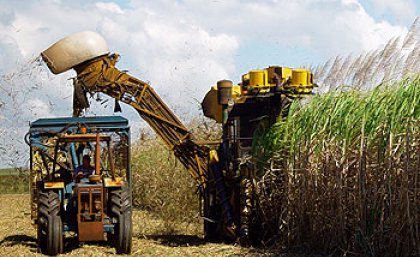
The Cooperative Research Centre for Sugar Industry Innovation through Biotechnology (CRC SIIB) based at UQ St Lucia has announced another year of strong progress in providing new and diverse opportunities for the Australian sugarcane industry.
As the world’s desire for fossil fuels continues to increase, the need for alternatives such as biofuels and bioproducts has become an essential part of an environmentally sustainable future. The CRC SIIB 2008/09 Annual Report highlights how research into Australia’s most promising biomass crop is delivering diverse product opportunities along with technologies to develop an array of new high-performing cane varieties now and into the future.
Highlights during 2008/09 include:
• Enormous advances in Industrial biotechnology. Research in this area resulted in a patent and license arrangement to manufacture high molecular weight Hyaluronic Acid – a significant body lubricant, development of BARRECOTE™ – a waterproofing compound that can be extensively used in the production of waterproof cardboard boxes, and GI Wise™ – a compound and extract from sugarcane with considerable advantages over existing GI lowering extracts.
• DArTs (the CRC SIIB’s gene marker technology) has positioned the Australian sugarcane breeding program to use biotechnology to improve the rate of genetic gains in the current breeding program. This gene mapping tool will give the Australian sugarcane industry the ability to significantly advance its plant breeding program.
• Research into the interactions of sugarcane plants and relatives in agricultural and natural systems to assess GM sugarcane safety and appropriate management processes resulted in a high level of understanding of sugarcane biology. This knowledge is being sought after by the Australian Gene Technology Regulator and other bodies to help evaluate potential risks posed by the introduction of genetically enhanced cane.
• Identification of sugarcane varieties that take up widely-used (high-cost) nitrogen in the most efficient way to grow. This will provide plant breeders with specific information on how to select for nitrogen efficiency.
• The creation of significant IP in seven projects; and continued training of 26 students in the areas of sugarcane biotechnology research and education.
CRC SIIB CEO, Dr Peter Twine, attributes the CRC’s strong progress to a highly skilled team of researchers and managers focused on delivering new and environmentally friendly product outcomes.
“Work undertaken by this CRC provides exciting new opportunities for the Australian sugar industry of the future,” Dr Twine said.
“These opportunities will help develop a sustainable and profitable export-based sugarcane industry, by combining Australia’s world-class strengths in molecular biology and chemical engineering with current industry skills and infrastructure.
“I would like to congratulate everyone involved in our CRC on their continuing commitment and progress towards our goals in 2008/09.”
To download the full Annual Report visit the CRC SIIB website at www.crcsugar.com
Media: CRC SIIB Communication Manager Julie Lloyd (0415 799 890, JLloyd@bses.org.au)


